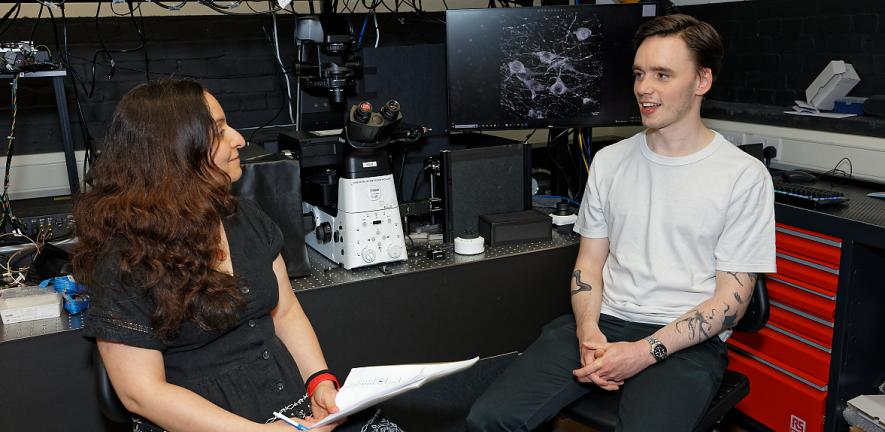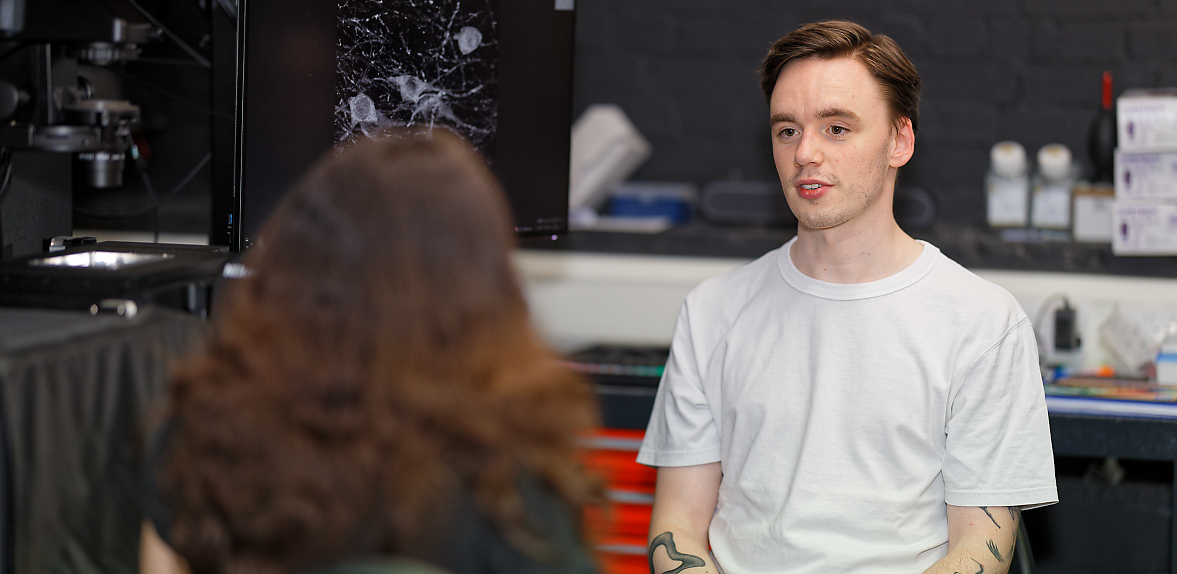
Jonathan is a third year PhD student and is an integral part of the ASAP (Aligning Science Across Parkinson’s) project, where his microscopy research advances our understanding of Parkinson’s disease. His background as a biologist gives him a unique insight into his research, and his upbringing in Germany gives him a different perspective on Cambridge life.
What’s the most unique thing about your lab?
I would say the most unique thing is that I actually get to work in two labs! I am at the intersection of the biophysics of protein aggregation in the Vendruscolo lab with huge ultracentrifuges and stinky bacteria, and the Lee lab with engineers who develop, build and improve bespoke microscopes for specific applications.
I get to pick the best of both worlds by producing/receiving important protein samples and using the microscopes to look at them.
A lot of people investigate very specific proteins and their involvement in disease but often they study them out of their natural context. Bespoke microscopes allow me to look at disease-relevant proteins in situ, that is, in their biological context – the brain, in my case.
What is the most unusual thing about your research?
To work properly, the bespoke miscroscopes of the Lee lab have to be in the basement because the vibrations in the building which affect readings are lowest there. They are also incredibly sensitive to any stray photons so I spend quite a lot of my working day in total darkness.
Why microscopy?
I will often spend the majority of my day meticulously preparing samples so the reward of getting a beautiful set of data out of a microscope is like nothing else.
Plus, the images I take look very pretty and I can send them to my friends.

What makes Cambridge unique?
One thing I continue to notice about Cambridge is that the people who work in the university are all incredibly dedicated and driven. Everyone I’ve interacted with has a clear determination and drive to achieve their research goals which is a very encouraging environment to exist in as a PhD student.
Does anything stand out?
The wealth of guest speakers, invited talks and events which I have found to be uniquely diverse and fascinating in Cambridge. I have chatted to the former Federal Minister for Defence of Germany over dinner as well as seen Nobel laureate Professor Jennifer Doudna speak about her discovery of CRISPR Cas9.
Is there anything that you remember from your first days in Cambridge?
The roads! It will sound funny but the lack of quality of the road surface was my first culture shock, especially coming here from the spotless roads in the Netherlands where I did both my Bachelor’s and Master’s degrees.
And how is Cambridge at the end of your PhD?
Now, after almost three years, I enjoy many things outside of the lab, like going to see concerts, cycling and rock climbing.
Author
Leila is a Senior Research Associate focused on super-resolution microscopy. In her free time she is a writer and poet and has published two novels in Persian and has worked as a columnist for UTNieuws. Originally from Iran, she lived in the Netherlands before moving to Cambridge.
This article was originally published in Chem@Cam magazine Issue 69.

